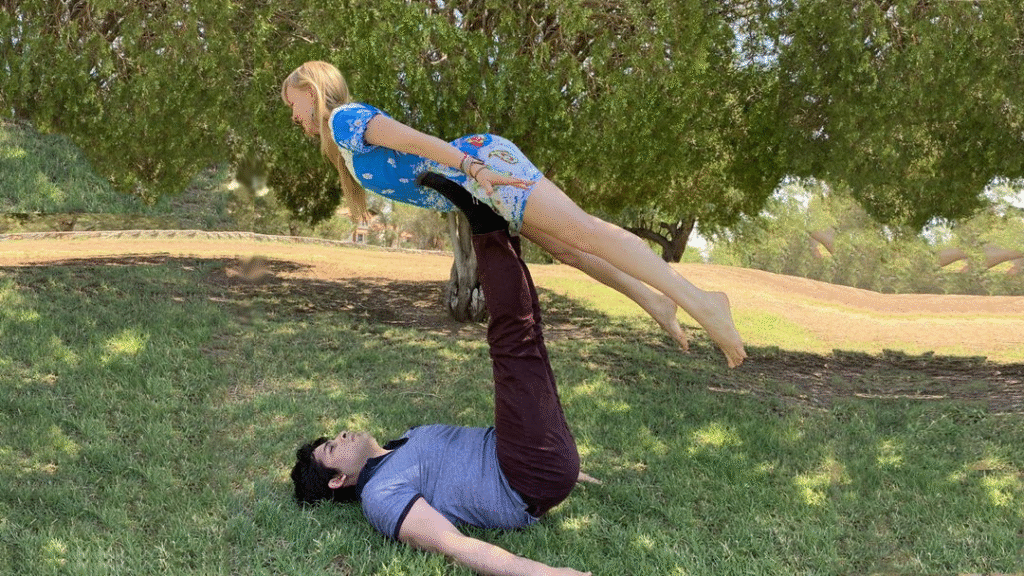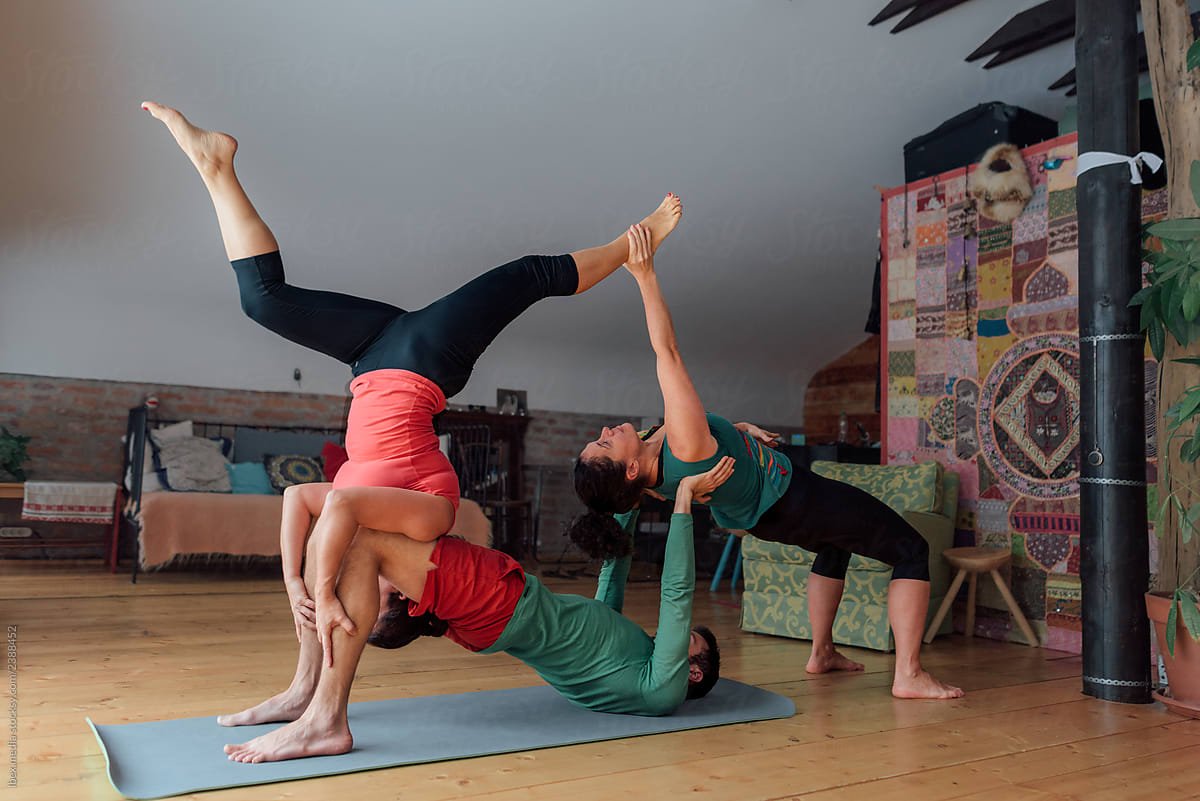AcroYoga blends the mindfulness of yoga, the thrill of acrobatics, and the nurturing touch of Thai massage into a dynamic, playful practice. While photos and videos might make it seem intimidating, AcroYoga is accessible to everyone—regardless of body type—as long as partners prioritize trust, clear communication, and a spirit of fun.
Below are three beginner-friendly poses to help you and your partner build confidence and connection in the air.
Base Test

To set up for the base test, a spotter (not shown in pictures) should stand beside the base and flyer in a wide, goddess-like stance, ready to catch the flyer if they fall. The base lies flat on their back on a yoga mat, legs straight up, feet over their hips like in Viparita Karani (legs up the wall). If the base has tight hamstrings, placing folded blankets under their hips can help.
When ready, the flyer rests their forearms on the base’s feet. Keeping eye contact, the flyer slowly shifts weight onto the base’s feet until their legs lift off the ground. Hold for a few breaths, then gently lower back down. Practice this until both partners feel comfortable with the weight transfer.
Front Plank

Once you and your partner feel good about the base test, move on to the front plank. The base and spotter set up the same way, but the base should slightly turn their feet out. The base can bend their knees a little as the flyer places their hips on the base’s feet. The flyer and base hold hands, fingers laced, with the base’s arms straight and wrists over their shoulders.
When the flyer feels steady, the base straightens their legs to lift the flyer. The flyer then straightens their arms, stacking their shoulders over the base’s. For balance, the flyer keeps their core tight and legs straight with pointed toes. The spotter can help adjust alignment if needed. To come down, the base bends their knees slowly. Stay with this pose until you feel stable before moving on.
Front Bird

Once front plank feels solid, try front bird. Start in front plank, and only when the flyer feels steady, they let go of the base’s hands.
The spotter stays close, ready to help if needed, as the flyer slowly stretches their arms back like in Salabhasana (Locust Pose).
The base can point their toes slightly into the flyer’s belly to help lift their upper body. When ready to release, the partners hold hands again, and the base bends their knees to lower the flyer down.
These three AcroYoga poses build trust between partners when practiced step by step. Have fun trying them out! And always remember: keep communication open, stay lighthearted, and enjoy the playfulness of Acro.

Final Tips for a Joyful Practice
- Communicate Constantly: Check in with each other before, during, and after each pose.
- Move Gradually: Master each step before progressing.
- Stay Playful: AcroYoga thrives on laughter and lightness—don’t take mistakes too seriously!
These three poses create a strong foundation for trust and teamwork. With patience and practice, you’ll soon discover the joy of flying together. Happy AcroYoga adventures!
